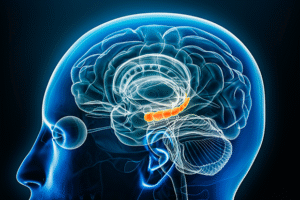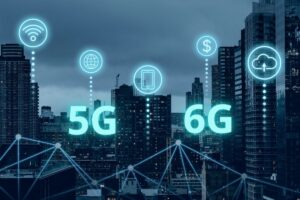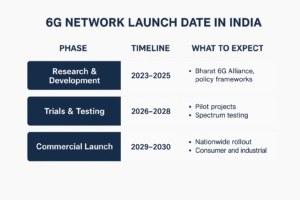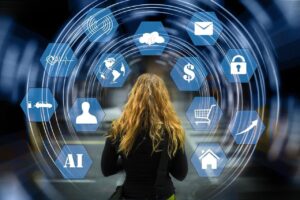🔍 Latest Technology News in Computers: What’s Changing Now
From hardware breakthroughs to new computing paradigms, 2025 is proving to be a pivotal year for computer technology. These innovations aren’t just incremental — many have the potential to reshape how we work, play, design, and solve global challenges like climate, healthcare, and security.
Here are 5 of the most important trends and announcements in computer tech right now, plus what to watch closely.
1. Microsoft’s Analog Optical Computer (AOC): Light-Based Computing
One of the more fascinating recent breakthroughs is Microsoft’s prototype analog optical computer, which uses light (micro-LEDs + camera sensors) instead of traditional electron-based digital switching for certain AI and optimization tasks. (Live Science)
Why it matters:
- Much higher energy efficiency: Microsoft claims this approach could be up to 100× more efficient than conventional digital systems for particular workloads. (Live Science)
- Great for specific problems: Tasks like machine learning inference, image processing, or optimization (where approximate / analog behavior is tolerable) are natural fits.
- Prototype stage: It’s not a universal replacement yet, but it’s a significant departure from silicon-only digital logic. Scaling up, improving precision, and integrating with existing hardware/software ecosystems will be challenging.
2. IBM Pushes Ahead in the Quantum Race
IBM has reasserted itself in the quest for quantum advantage — the point where quantum computers can outperform classical ones in meaningful tasks. (The Wall Street Journal)
Some key points:
- IBM’s investing in larger quantum chip clusters and improving fault tolerance, co-working with partners like AMD. (The Wall Street Journal)
- They’ve deployed quantum systems like “IBM Quantum System Two” (very low temperature, highly controlled environment) for serious scientific work. (The Wall Street Journal)
- There’s also the deployment of one of IBM’s quantum computers in Japan’s RIKEN Center (quantum + classical hybrid setups) to tackle real-world tasks, especially in optimization and simulation. (Barron’s)
Quantum remains specialized and fragile, but the progress is steady. Error correction and coherence (keeping qubits stable) remain big hurdles.
3. Eliminating Waste Heat: The Optoelectronic / Excitonic Switch
One of the less-sexy but hugely impactful problems in computing is heat. It’s what forces fans, cooling systems, power draw, and limits how dense and fast computers can run.
Researchers have developed an optoexcitonic switch — a device that uses excitons (neutral electron-hole pairs) instead of a flow of electric charges to switch states, meaning much less waste heat, and also much smaller switches. (Live Science)
Why this could matter:
- Smaller, cooler circuits → more efficient processors, data centers, possibly fan-less designs.
- Could help in battery-powered devices to last longer.
- Still early: many engineering/material science challenges remain (fabrication, stability, scaling). But an exciting vision.
4. AI PCs to Become Mainstream: Lenovo’s Prediction
At IFA 2025, Lenovo predicted that all PCs will be “AI-enabled” within the next five years — that is, PCs with Neural Processing Units (NPUs) built in, hardware designed to accelerate AI tasks locally. (Windows Central)
Key insights:
- Users upgrading to newer operating systems, features like “Copilot+ PC”, and manufacturers pushing AI inference on-device rather than in the cloud.
- Software has some catching up to do: many developers and independent software vendors (ISVs) are retooling apps to use NPUs. (Windows Central)
- AI PCs could transform workflows — from content creation, image/video editing, to more intelligent assistants on desktops.
5. Project Maverick: Dell’s Internal Overhaul for the AI Era
Dell is running a confidential project called Project Maverick, aimed at modernizing its internal IT infrastructure to support AI, streamline operations, and reduce technical debt. (Business Insider)
Details:
- Dell has thousands of applications, tens of thousands of servers and databases. Maverick seeks to consolidate this into a more standardized, modern platform.
- They’re targeting early 2026 for major rollouts.
- The move reflects a broader theme: even big hardware & infrastructure companies realize that old systems can be huge drag on innovation.
🌐 Broader Themes & What to Watch
These recent developments are part of larger movements in computer tech. Some trends are apparent:
- Energy efficiency is no longer optional: reducing heat, power usage, and finding new switching paradigms (optical, excitonic, etc.).
- Hybrid computing models (quantum + classical, analog + digital) are becoming more realistic.
- On-device AI is being prioritized: more functionality locally rather than sending everything to the cloud (for latency, privacy, offline use).
- Sustainability and supply chain modernization are getting more attention (less waste, more efficient data centers, engineering for repair).
✅ What This Means for Users & Industry
- Expect new PCs in the coming years with features like NPUs, more efficient cooling, and AI acceleration built in.
- For organizations, big infrastructure upgrade projects (like Dell’s) show that to stay competitive, one must modernize back-end systems too.
- For developers, there’s opportunity (and pressure) to design software that uses these new hardware features (optical computing, excitonic switches, quantum, etc.).
- For consumers, some innovations (like cooling or battery improvements) might flow down slowly; others (AI PCs, better user experience) may start showing up sooner.







Be First to Comment